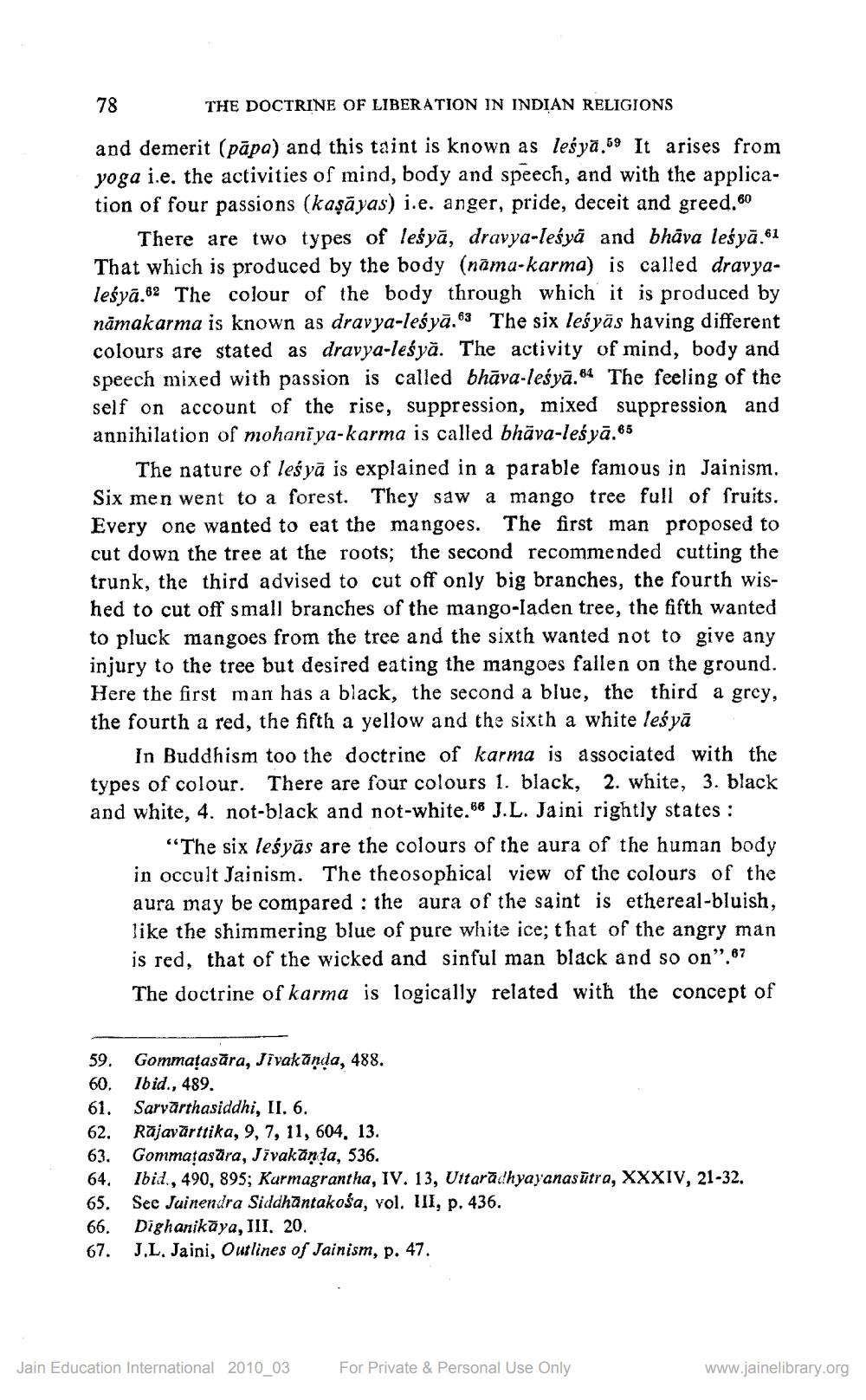________________
78 THE DOCTRINE OF LIBERATION IN INDIAN RELIGIONS and demerit (pāpa) and this taint is known as leśyā.69 It arises from yoga i.e. the activities of mind, body and speech, and with the application of four passions (kaşā yas) i.e. anger, pride, deceit and greed.60
There are two types of leśyā, dravya-leśyā and bhāva leśyā.61 That which is produced by the body (nāma-karma) is called dravyaleśyā.62 The colour of the body through which it is produced by nāmakarma is known as dravya-leśyā.63 The six leśyās having different colours are stated as dravya-leśyā. The activity of mind, body and speech mixed with passion is called bhāva-leśyā.64 The feeling of the self on account of the rise, suppression, mixed suppression and annihilation of mohani ya-karma is called bhāva-les yā.65
The nature of leśyā is explained in a parable famous in Jainism. Six men went to a forest. They saw a mango tree full of fruits. Every one wanted to eat the mangoes. The first man proposed to cut down the tree at the roots; the second recommended cutting the trunk, the third advised to cut off only big branches, the fourth wis
d to cut off small branches of the mango-laden tree, the fifth wanted to pluck mangoes from the tree and the sixth wanted not to give any injury to the tree but desired eating the mangoes fallen on the ground. Here the first man has a black, the second a blue, the third a grey, the fourth a red, the fifth a yellow and the sixth a white leśyā
In Buddhism too the doctrine of karma is associated with the types of colour. There are four colours 1. black, 2. white, 3 and white, 4. not-black and not-white. 66 J.L. Jaini rightly states :
“The six leśyās are the colours of the aura of the human body in occult Jainism. The theosophical view of the colours of the aura may be compared : the aura of the saint is ethereal-bluish, like the shimmering blue of pure white ice; that of the angry man is red, that of the wicked and sinful man black and so on". 67 The doctrine of karma is logically related with the concept of
59. Gommatasāra, Jivakānda, 488. 60. Ibid., 489.
Sarvārthasiddhi, II. 6. 62. Rajavarttika, 9, 7, 11, 604, 13. 63. Gommatasära, Jivakānda, 536, 64. Ibid., 490, 895; Kurmagrantha, IV. 13, Uttarādhyayanasūtra, XXXIV, 21-32. 65. See Juinendra Siddhantakośa, vol. II, p. 436. 66. Dighanikāya, III, 20. 67. J.L. Jaini, Outlines of Jainism, p. 47.
Jain Education International 2010_03
For Private & Personal Use Only
www.jainelibrary.org




